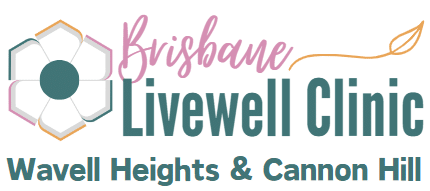Understanding Bowen Therapy
Bowen therapy, also known as Bowenwork or Bowtech, is a holistic and gentle form of bodywork that aims to promote healing and pain relief. Developed by Thomas Ambrose Bowen in Australia, the therapy focuses on gently stretching the fascia, a connective tissue that surrounds and influences every organ and tissue in the body.
Origins of Bowen Therapy
Bowen therapy was developed in the 1950s and 1960s by Thomas Ambrose Bowen, an Australian practitioner. Despite not being a medical professional, Bowen claimed that his therapy could reset the body's pain response and facilitate healing (Healthline). This gentle and non-invasive technique gained popularity for its ability to provide pain relief and improve overall well-being.
Mechanism of Bowen Therapy
Bowen therapy is based on the idea that gentle manipulations of the fascia can stimulate the body's natural healing response. The therapy focuses on precise and gentle rolling hand movements that target muscles, tendons, ligaments, fascia, and skin (Healthline). These specific movements aim to release tension, restore balance, and promote pain relief.
The therapy is believed to work by altering the nervous system. It is thought to inhibit the sympathetic nervous system, responsible for the fight-or-flight response, and activate the parasympathetic nervous system, responsible for the rest-and-digest response. By influencing the autonomic nervous system, Bowen therapy aims to create a state of deep relaxation, allowing the body to heal and restore itself.
Bowen therapy is performed on the superficial and deep fascia, with gentle moves made in precise locations to maximize the influence on the nervous system with minimal inputs. This gentle stretching of the fascia promotes pain relief in the muscles and can alleviate related neurological conditions.
While the exact mechanisms behind Bowen therapy are still being explored, many individuals have reported positive outcomes, including pain reduction and improved overall well-being. Scientific research on the effectiveness of Bowen therapy is ongoing, and further studies are needed to fully understand its mechanisms of action and potential benefits.
Understanding the origins and mechanism of Bowen therapy provides insight into the principles behind this unique approach to healing. In the following sections, we will explore the effectiveness of Bowen therapy in reducing pain, improving mobility, and its potential benefits for chronic illnesses.
Effectiveness of Bowen Therapy
Bowen therapy has garnered attention for its potential effectiveness in addressing various physical ailments. While scientific evidence on the therapy's effectiveness is limited, several studies have reported positive outcomes for pain reduction, improved mobility, and even chronic illnesses like multiple sclerosis. However, more comprehensive research is needed to fully understand the long-term impact of Bowen therapy.
Pain Reduction
One of the potential benefits of Bowen therapy is pain reduction. Over half of the studies conducted on Bowenwork reported its effectiveness in reducing pain, including conditions such as migraines and lower back pain. A study conducted on the effects of Bowen therapy on back pain showed that almost 90% of treatments resulted in either a complete or partial recovery. Of those treated, 35.3% reported a "Full Recovery" and 54.4% reported a "Partial Recovery" (Bowen Technique Bristol). It's important to note that individual experiences may vary, and further research is needed to fully understand the scope of Bowen therapy's pain-reducing potential.
Improved Mobility
Another potential benefit of Bowen therapy is improved mobility. Limited scientific proof exists on its effectiveness, but some studies have reported positive outcomes in terms of flexibility and motor function. For instance, a study conducted on the effects of Bowen therapy on chronic stroke patients found improved motor function for rehabilitation. However, it's essential to note that high-quality scientific data on the effectiveness of Bowen therapy are still limited, and more comprehensive research is required to fully understand its impact on mobility (Medical News Today).
Bowen Therapy for Chronic Illnesses
Bowen therapy has also shown promise in addressing chronic illnesses like multiple sclerosis. Some studies have noted the effectiveness of Bowen therapy in relieving symptoms experienced by individuals with chronic illnesses. However, it's important to emphasize that further research is needed to explore the therapeutic potential of Bowen therapy for chronic illnesses in more detail. The existing studies provide preliminary evidence, but more comprehensive research is required to validate these findings.
While Bowen therapy shows promise in pain reduction, improved mobility, and addressing chronic illnesses, it's crucial to consult with a qualified practitioner and discuss your specific needs before starting any treatment. Bowen therapy may not be suitable for everyone, and individual responses to the therapy can vary.
How Bowen Therapy Works
Bowen therapy is a holistic remedial body technique that targets mechanoreceptors and soft connective tissue, such as fascia, to address musculoskeletal or related neurological problems. The therapy focuses on the underlying issue, not just the symptoms, making it a comprehensive approach to healing.
Nervous System Impact
One of the key aspects of Bowen therapy is its impact on the nervous system. The therapy is believed to work by altering the nervous system, inhibiting the sympathetic nervous system (fight-or-flight response), and activating the parasympathetic nervous system (rest-and-digest response). By influencing these two branches of the autonomic nervous system, Bowen therapy aims to restore balance and promote overall well-being.
Autonomic Nervous System
Bowen therapy also acts on the autonomic nervous system, which controls involuntary bodily functions. Therapists practicing this technique believe that it inhibits the sympathetic nervous system and activates the parasympathetic nervous system (Healthline). This shift from the fight-or-flight response to the rest-and-digest response helps to induce deep relaxation, reduce stress, and support the body's natural healing processes.
Scientific Evidence on Bowen Therapy
While there is limited scientific proof on the effectiveness of Bowen therapy, some studies suggest potential benefits in pain management, flexibility, and motor function. However, more comprehensive research is required to understand its impact over a longer period of time. Some studies have reported positive results, including reduced pain in conditions like migraines, improved mobility, and short-term pain reduction in lower back pain (Medical News Today). However, it is important to note that the existing scientific evidence on Bowen therapy is not extensive, and further research is needed to fully understand its effects.
Despite the limited scientific evidence, many individuals have reported positive experiences and benefits from Bowen therapy. It is important to consult with a qualified bowen therapist who can assess your specific condition and provide personalized treatment. They will be able to guide you through the therapeutic process and help you determine if Bowen therapy is suitable for your needs.
In the next section, we will explore the duration of Bowen therapy sessions, factors that may affect the number of sessions required, and potential side effects of the therapy.
Bowen Therapy Sessions
When considering Bowen therapy for your needs, it's helpful to understand what to expect during the sessions. Bowen therapy sessions typically involve sequences of small moves at different pressures on specific sites of the body. The therapy itself lasts between 30 minutes to one hour, and it can be done through light clothing, making it a comfortable experience (Better Health Victoria).
Duration of Sessions
Bowen therapy sessions usually last between 30 minutes to 1 hour. The duration of each session allows the therapist to perform the necessary moves and provide enough time for the body to respond to the treatment. The specific length of the session may vary slightly depending on individual factors and the approach of the Bowen therapist. It's important to communicate with your therapist to determine the best duration for your specific needs and goals.
Factors Affecting Number of Sessions
The total number of sessions needed in Bowen therapy can vary based on individual factors. Factors that may influence the number of sessions include the specific condition being addressed, the severity and duration of the issue, and how the individual responds to the treatment. In some cases, individuals may experience relief after the first session, while others may require multiple sessions to see significant improvement. The total number of sessions can be determined by the Bowen therapist, who will assess your progress and adjust the treatment plan accordingly (Healthline, Better Health Victoria).
Side Effects of Bowen Therapy
Bowen therapy is generally considered safe for individuals of all ages, from newborns to older adults. The therapy involves gentle, precise pressure applied by the therapist using their thumbs and fingers on specific areas of the body. It does not involve forceful manipulation or aggressive techniques. However, it's important to note that everyone responds differently to treatment, and rare side effects such as temporary soreness, fatigue, or emotional releases may occur. If you experience any concerning or persistent side effects, it is recommended to consult with a healthcare professional.
After a Bowen therapy session, the therapist may advise avoiding other forms of physical therapy or manipulation for at least one week to allow the body to adjust. It is also important to stay hydrated after the session, as hydration is essential for the fascia to respond well. Light movement and gentle exercise are encouraged to aid in recovery and support the overall benefits of the treatment.
Understanding the duration of sessions, factors affecting the number of sessions, and potential side effects can help you make informed decisions about incorporating Bowen therapy into your wellness routine. It's always recommended to consult with a qualified Bowen therapist to discuss your specific needs and develop an individualized treatment plan.
Bowen Therapy Techniques
Bowen therapy utilizes specific techniques to address various musculoskeletal and neurological conditions. The therapy focuses on gently stretching the fascia, which is the soft connective tissue that surrounds and influences every organ and tissue in the body. Let's explore the key techniques used in Bowen therapy: fascia stretching, hand movements, and the therapeutic benefits they offer.
Fascia Stretching
One of the primary techniques used in Bowen therapy is fascia stretching. The practitioner applies minimal, light rolling moves over specific areas of the body, targeting muscles, tendons, ligaments, fascia, and skin. These moves are made in precise locations to maximize the influence of the nervous system with minimal inputs. By gently stretching the fascia, Bowen therapy aims to promote pain relief and address a variety of musculoskeletal and neurological disorders.
Hand Movements
Bowen therapy involves specific hand movements that are performed in a rolling fashion over the body. These light and gentle moves are made in a sequence of sets and are designed to stimulate the nervous system and facilitate the body's natural healing response. The therapist applies these hand movements to targeted areas, allowing the body to release tension patterns at its own pace. Unlike massage, where constant contact between the therapist's hands and the client's body is maintained, Bowen therapy incorporates hands-off periods, providing the client with time to relax and respond.
Therapeutic Benefits
Bowen therapy offers several therapeutic benefits to individuals seeking pain relief and improved well-being. The gentle and precise fascia stretching and hand movements used in Bowen therapy can help:
- Reduce pain: By targeting specific areas, Bowen therapy aims to alleviate pain associated with musculoskeletal conditions and promote overall pain reduction in the body.
- Improve mobility: The gentle stretching and manipulation of the fascia in Bowen therapy can help enhance flexibility and range of motion.
- Enhance relaxation: The hands-off periods during Bowen therapy sessions allow clients to relax and respond to the therapy, promoting a sense of relaxation and overall well-being.
- Reduce stress: Bowen therapy's gentle approach and focus on the body's natural healing response can help reduce stress levels and promote relaxation.
- Support the body's natural healing processes: Bowen therapy aims to address the underlying issues causing discomfort or pain, rather than just treating the symptoms. By stimulating the nervous system and promoting the body's own healing mechanisms, Bowen therapy supports holistic healing and recovery.
It's important to note that Bowen therapy is a complementary therapy and should not replace medical treatment. If you are considering Bowen therapy, it is recommended to consult with a qualified Bowen therapist to discuss your specific needs and determine if it is a suitable option for you.
By utilizing techniques such as fascia stretching and specific hand movements, Bowen therapy aims to provide individuals with a holistic approach to pain relief and improved well-being. The gentle nature of Bowen therapy makes it a potentially beneficial option for individuals seeking a non-invasive and relaxing treatment for their musculoskeletal and neurological conditions.
Bowen Therapy vs. Massage
When it comes to seeking relief from injuries or physical pain, you may come across both Bowen therapy and massage as potential treatment options. While these two modalities share some similarities, they differ in their approach, techniques, and client experience.
Approach and Techniques
Bowen therapy and massage have distinct approaches and techniques. Massage therapy is a hands-on technique where the therapist constantly touches the client's body, using various strokes, kneading, and pressure to manipulate the muscles and soft tissues. This hands-on approach allows the therapist to directly address specific areas of tension or pain.
On the other hand, Bowen therapy involves a combination of minimal, light moves over the tissues and hands-off periods. The therapist applies gentle, rolling moves over specific areas of the body, not necessarily at the point of pain or tension. These moves stimulate the muscles, fascia, and nerves, allowing the body to let go of holding tension patterns in its own time. The therapy focuses on the underlying issue, not just the symptoms.
Client Experience
The client experience can differ between Bowen therapy and massage. During a massage session, the therapist is in constant contact with your body, actively manipulating the muscles and soft tissues. This hands-on approach can provide immediate relief and relaxation. The pressure applied during the massage can be adjusted based on your preferences and comfort level.
In Bowen therapy, the therapist applies gentle moves and then allows the client to relax and respond. The therapist may leave the room or give you some quiet time to allow your body to process the stimulus. This hands-off approach gives your body the opportunity to integrate the effects of the therapy at its own pace. Some individuals find this approach deeply relaxing, allowing for a profound release of tension and relaxation.
Research Studies on Bowen Therapy
Bowen therapy has been the subject of several research studies, exploring its effects on various conditions. Research has shown that Bowen therapy may provide short-term relief for multisite chronic pain and can be effective in treating nocturnal enuresis (bedwetting) and asthma (Bowen Therapy UK). However, it is important to note that more research is needed to fully understand the extent of its benefits and the specific conditions it may help.
Massage therapy has also been extensively studied and has shown positive effects on pain reduction, stress reduction, improved circulation, and relaxation. The research on massage therapy is more extensive compared to Bowen therapy, with numerous studies supporting its efficacy for various conditions.
In summary, Bowen therapy and massage differ in their approach, techniques, and client experience. Bowen therapy utilizes gentle moves and a hands-off approach, focusing on the body's ability to self-regulate and heal. Massage therapy, on the other hand, involves direct manipulation of the muscles and soft tissues through hands-on techniques. Both modalities have their own merits, and the choice between Bowen therapy and massage depends on your specific needs and preferences. It is always recommended to consult with a qualified professional to determine which treatment option is most suitable for you.
Last Updated on 10 June 2024 by Brisbane Livewell Clinic









